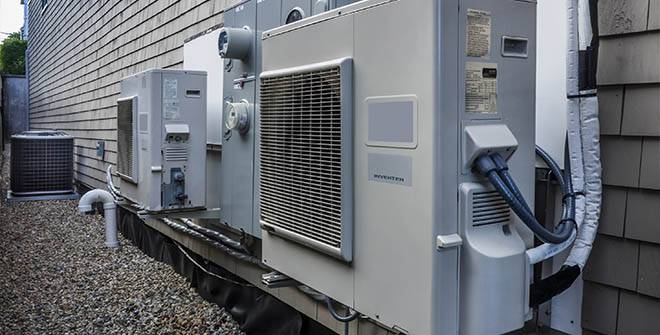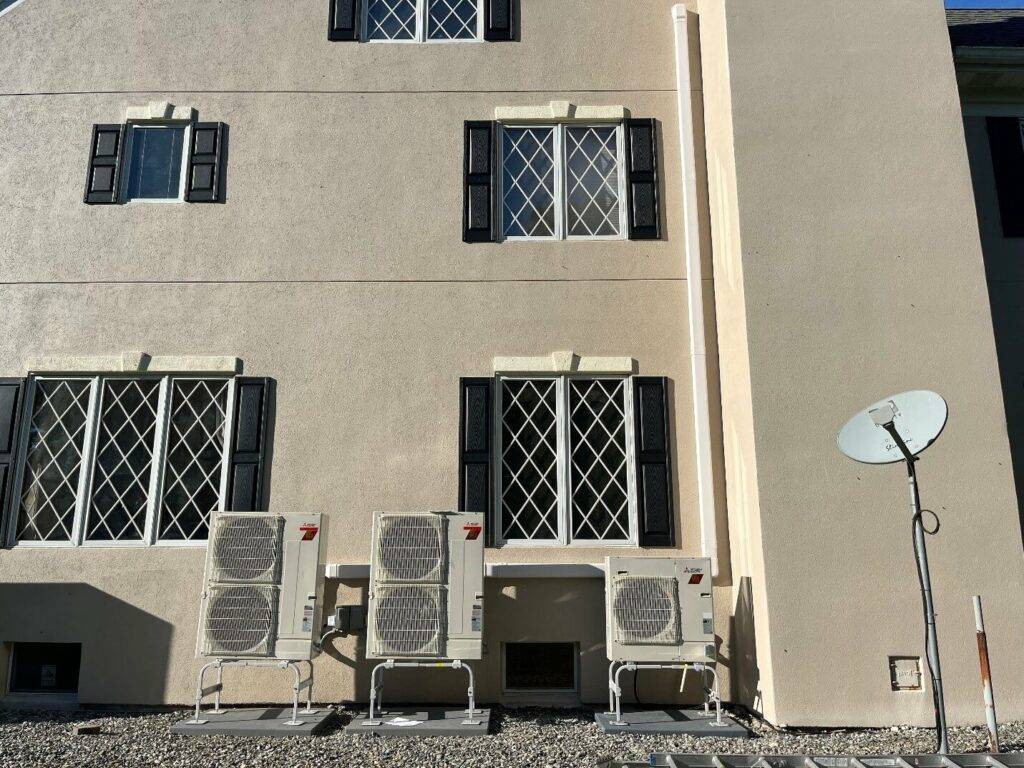
When it comes to heating, ventilation, and air conditioning (HVAC) systems, understanding key terms like SEER and BTU is essential. These acronyms play a significant role in determining the efficiency and capacity of your HVAC system, which in turn affects your comfort and energy bills. Whether you’re looking to install a new system, maintain your current one, or simply want to make informed decisions about your HVAC needs, knowing the differences between SEER and BTU can help you choose the right system for your home or business.
What is SEER?
SEER, or Seasonal Energy Efficiency Ratio, is a crucial metric for assessing the energy efficiency of an air conditioning unit. It measures the cooling output during a typical cooling season divided by the total electric energy input during the same period. Essentially, SEER provides a way to compare the energy efficiency of different air conditioning systems.
How is SEER Calculated?
The SEER rating is calculated by taking the total cooling output (in BTUs) of an air conditioner over a cooling season and dividing it by the total energy consumed (in watt-hours) during that same period. For example, an air conditioner that produces 60,000 BTUs of cooling and consumes 5,000 watt-hours of electricity would have a SEER rating of 12.
SEER = Total Cooling Output (BTUs) / Total Energy Input (Watt-Hours)
Importance of SEER in Determining Energy Efficiency
The SEER rating is important because it gives you an idea of how efficiently an air conditioner will operate. The higher the SEER rating, the more efficient the system is. This means lower energy bills and a reduced environmental impact. Modern air conditioning units typically have SEER ratings ranging from 13 to 21, with higher-rated units offering better energy savings.
Benefits of a Higher SEER Rating
- Cost Savings: Units with higher SEER ratings consume less energy, leading to lower electricity bills.
- Environmental Impact: More efficient systems reduce greenhouse gas emissions.
- Comfort: Higher SEER units often have advanced features that improve overall comfort, such as better humidity control and quieter operation.
For more information on efficient air conditioning options, visit our Air Conditioning Services page.

What is BTU?
BTU, or British Thermal Unit, is a measure of heat energy. In the context of HVAC systems, it quantifies the amount of heat an air conditioning or heating unit can remove or add to a room in one hour. Understanding BTU is essential for selecting a system that has the appropriate capacity for your space.
How BTU Measures Heating and Cooling Capacity
BTU is a straightforward measure: one BTU is the amount of energy needed to raise the temperature of one pound of water by one degree Fahrenheit. When applied to HVAC systems, the BTU rating indicates the system’s ability to cool or heat a specific area. For instance, a 10,000 BTU air conditioner can remove 10,000 BTUs of heat from the air per hour.
Importance of BTU in Sizing HVAC Systems
Choosing an HVAC system with the right BTU rating is critical for maintaining comfort and efficiency. If the system is too small (low BTU rating), it won’t adequately cool or heat the space, leading to overwork and higher energy consumption. Conversely, an oversized system (high BTU rating) will cycle on and off frequently, causing inefficient operation and potentially leading to higher energy bills and wear and tear on the unit.
Common BTU Ratings for Residential and Commercial Systems
Residential air conditioners typically range from 5,000 to 30,000 BTUs, depending on the size of the area to be cooled. Commercial systems, which often need to condition larger spaces, can have BTU ratings in the hundreds of thousands.
For more detailed information on air conditioning systems and to find the right one for your needs, visit our AC Installation page.
SEER vs. BTU: Key Differences
Understanding the differences between SEER and BTU is crucial for selecting the right HVAC system for your needs. While both metrics are important, they serve different purposes and provide distinct information about your HVAC system’s performance.
Efficiency vs. Capacity
- SEER (Seasonal Energy Efficiency Ratio) measures the efficiency of an air conditioning system. It indicates how much cooling output (in BTUs) you get for each watt-hour of electricity consumed. A higher SEER rating means the unit is more efficient, using less energy to provide the same amount of cooling.
- BTU (British Thermal Unit) measures the capacity of an air conditioning or heating system. It indicates the amount of heat the system can remove or add to the air per hour. A higher BTU rating means the unit can handle larger spaces or more extreme temperature changes.
How SEER and BTU Complement Each Other
When choosing an HVAC system, both SEER and BTU ratings are important. The SEER rating helps you understand how energy-efficient the system will be, which impacts your energy bills and environmental footprint. The BTU rating ensures that the system has the capacity to adequately cool or heat your space.
For example, if you have a large home in a hot climate, you might need a system with a high BTU rating to handle the load, but you’ll also want a high SEER rating to keep your energy costs down. Conversely, for a smaller space, you might not need as high a BTU rating, but an efficient system with a high SEER rating can still provide significant energy savings.
Examples of Choosing HVAC Systems Based on SEER and BTU
- Residential Example: A homeowner in a moderate climate might choose a 15 SEER air conditioner with a 24,000 BTU rating. This combination ensures efficient operation while providing adequate cooling for a medium-sized home.
- Commercial Example: A business owner with a large office space in a hot climate might opt for a 20 SEER unit with a 100,000 BTU rating. This ensures the system can handle the large space and high cooling demands efficiently.
For personalized advice on selecting the right HVAC system for your needs, visit our AC Repair page or Contact Us directly.

Choosing the Right HVAC System for Your Needs
Selecting the right HVAC system involves balancing both SEER and BTU ratings to meet your specific requirements. Here’s how you can ensure you make the best choice for your home or business:
Assessing Your Home or Business Needs
Start by evaluating the size of the space you need to heat or cool. This will help you determine the appropriate BTU rating. Larger spaces or areas with poor insulation will require higher BTU ratings. Additionally, consider the typical climate in your region—hotter climates may necessitate more powerful cooling systems.
Considering Climate and Building Size
- Climate: In warmer climates, air conditioners with higher SEER ratings can save significantly on energy costs. In colder regions, consider the heating efficiency of your HVAC system as well.
- Building Size: The larger the building, the higher the BTU rating needed to maintain comfortable temperatures. Use tools like a BTU calculator to estimate the required capacity based on your building’s square footage.

Balancing SEER and BTU for Optimal Performance and Cost Savings
Finding the right balance between SEER and BTU ratings ensures both efficient operation and effective temperature control. Here are a few tips:
- Energy Efficiency: Choose a unit with a high SEER rating to reduce energy consumption and lower utility bills. While higher SEER units may have a higher upfront cost, the long-term savings on energy bills can offset this initial investment.
- Capacity: Ensure the BTU rating matches the size and specific needs of your space. An undersized unit will struggle to maintain comfort, while an oversized unit will cycle on and off too frequently, leading to inefficiencies.
- Professional Assessment: Consult with HVAC professionals to perform a load calculation. This detailed analysis considers various factors like square footage, insulation, window placement, and local climate to recommend the ideal BTU and SEER ratings for your system.
For more information on maintaining and optimizing your HVAC system, check out our AC Maintenance services.
Conclusion
Understanding the distinctions between SEER and BTU is essential for making informed decisions about your HVAC system. SEER ratings indicate how efficiently a unit operates, impacting your energy bills and environmental footprint. BTU ratings determine the system’s capacity to heat or cool a space, ensuring comfort and adequate temperature control.
When choosing an HVAC system, it’s important to balance these two metrics to find a unit that meets your specific needs. Assess your space, consider the climate, and seek professional guidance to ensure optimal performance and cost savings. Whether you’re installing a new system, upgrading an existing one, or maintaining your current setup, the right combination of SEER and BTU can significantly enhance your comfort and efficiency.
For personalized advice and expert HVAC services, visit our Air Conditioning Services page or Contact Us directly. Our team at Integrate Comfort Systems is here to help you find the perfect solution for your heating and cooling needs.







